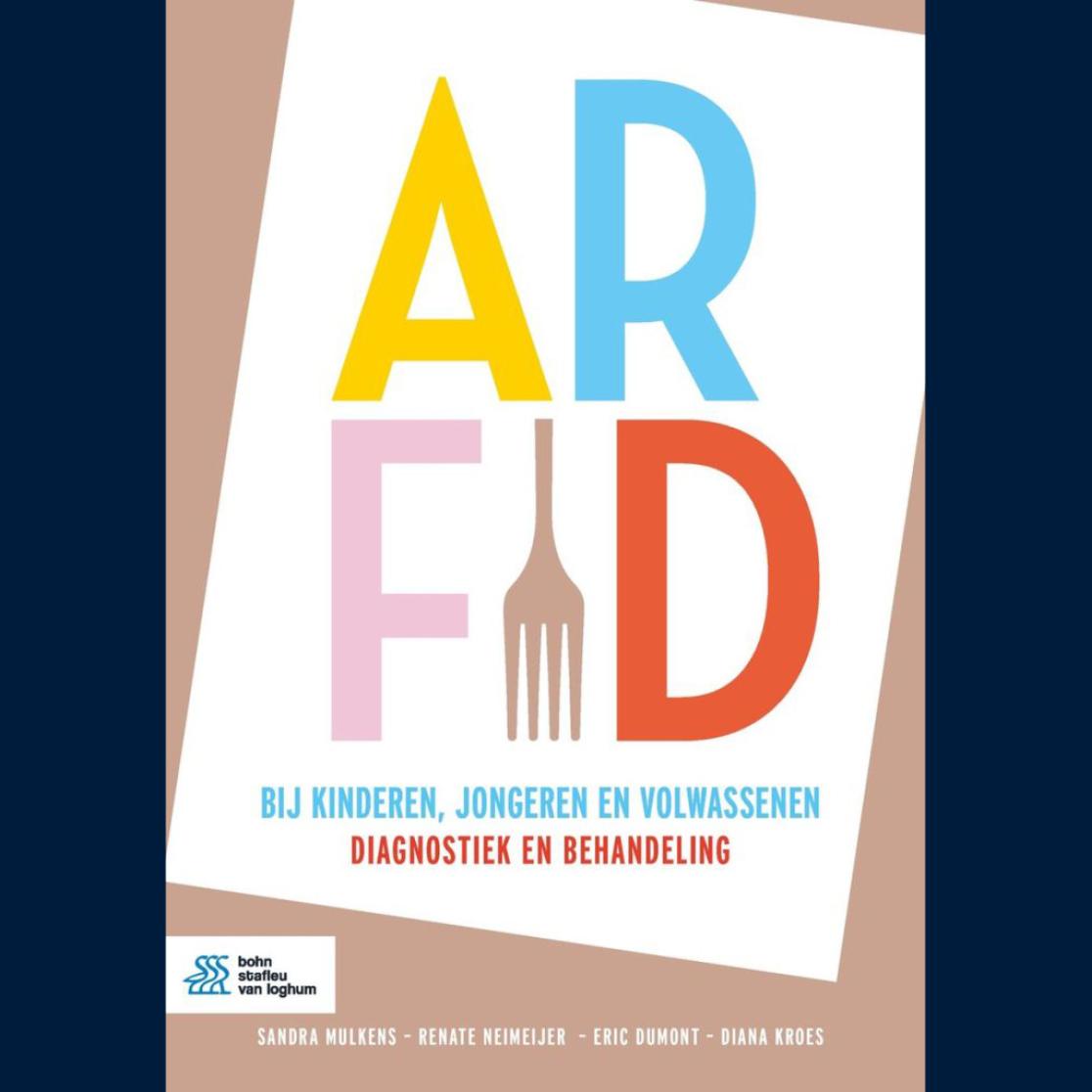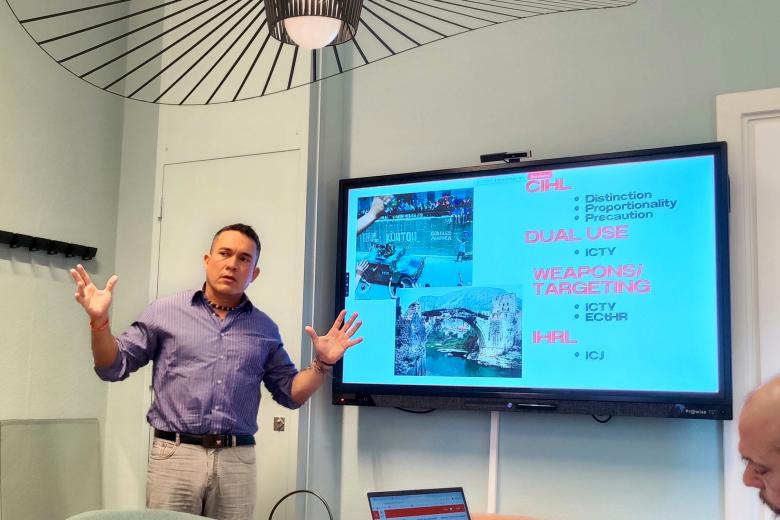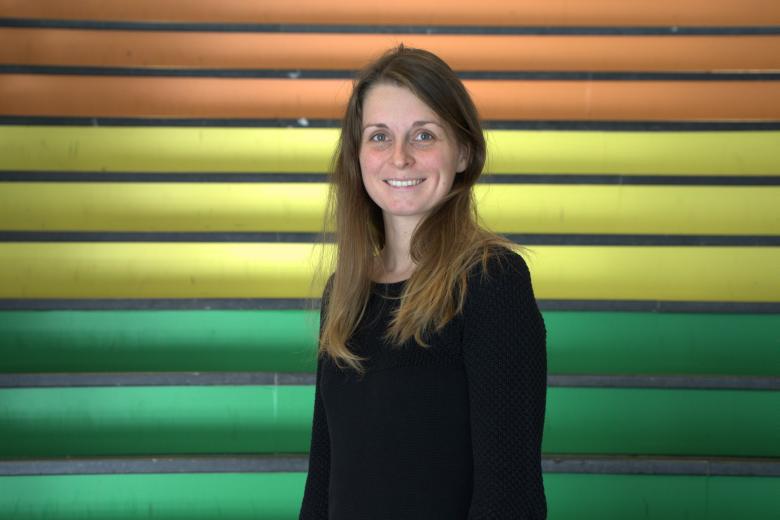A manual for ARFID | Sandra Mulkens
Professor of nutrition and eating disorders Sandra Mulkens at the Faculty of Psychology and Neuroscience at Maastricht University publishes ARFID bij kinderen, jongeren en volwassenen: diagnostiek en behandeling (ARFID in children, adolescents and adults: diagnostics and treatment) in collaboration with Renate Neimeijer, Eric Dumont and Diana Kroes.
Avoidant/ Restrictive Food Intake Disorder | ARFID
‘In the DSM-5, this eating disorder is described alongside anorexia nervosa and bulimia nervosa (among others), two eating disorders much better known than ARFID. For a long time, it was in the DSM under a different name as a disorder in children under 6 years old, with features such as being underweight and not growing enough. But since 2013, it has been officially listed as an eating disorder that can occur at all ages and does not require being underweight or losing weight. Indeed, ARFID patients may even be overweight or obese’.
ARFID patients eat too little and/or too selectively, with serious consequences for health and/or psychosocial well-being. Physical symptoms include dangerous weight loss or not getting enough nutrients. It can also lead to psychosocial problems. ‘Due to selective eating, people lose their social contacts because they are unable to go places because of ARFID’.
‘People with ARFID can become underweight, but also overweight. You often see that people only consume one type of food. For example, in people who can only selectively tolerate crunchy food, you see that their daily diet consists only of, say, crisps; this then quickly leads to obesity.’
Where does the avoidance come from?
Restrictive and/or selective food intake can be caused by a number of factors. ‘Within ARFID, there are different profiles. There are people with no interest in eating, they feel no hunger stimulus and simply forget or are quickly full. So these people eat too little (restrictive) and are more likely to be underweight or struggle to maintain weight. There are also people with sensory sensitivity; they avoid certain foods because of their colour, taste, smell or texture. They prefer certain products that they find pleasant to the touch or taste (e.g. crunchy). And there are people who eat selectively because they fear the consequences of eating: choking, vomiting, allergic reactions, abdominal pain, etc.’
The cause may be a biological (e.g. difficulty learning to eat orally after tube feeding in preterm infants) or psychological (anxious personality, autism) predisposition. On the other hand, experiences contribute, e.g. parents who have ARFID themselves and offer little variety to children, or people who have had a traumatic choking experience and so develop anxiety. ‘All this is then perpetuated by avoidance’.
How did the book come about?
Through SeysCentra, a specialised national treatment centre for children with ARFID, Sandra's special chair was established at Maastricht University. ‘This boosted research into ARFID and its treatment. And it was needed, because although 3-5% in children are affected by ARFID (adults about 1%), there is still very little knowledge available among practitioners. Through this chair, we wanted to give ARFID a proper place in the healthcare landscape. This includes communicating the knowledge, through training courses, lectures, workshops, but also resources such as this book.’
A book on ARFID treatment already existed in the US, but there was no Dutch book on diagnosis and treatment for professionals, until now. ‘We hope that this book can ensure that there is more knowledge about ARFID in healthcare so that patients can be recognised in time and treated in the primary, primary and secondary care settings, instead of only being treated in a highly specialised centre. Many patients with ARFID can be helped in an outpatient setting, for example with weekly sessions of cognitive behavioural therapy. As long as, as a practitioner, you know how to recognise it and how to do a good exposure.’

What does treatment look like?
Our book is very much focused on cognitive behavioural therapy. ‘Treatment for children and adults is approached differently. With young children, we go step by step with practical tasks and rewards to learn to eat things. With older children, adolescents and adults, it is more explicit about expectations and exploring these through exposure. Adults expect a certain outcome when they eat something, which is why they leave it. If they can explore and perhaps refute those expectations, they will also dare to eat more and more varied foods. This method does not work well with a four-year-old child, who is not verbal enough for that. Operant principles work better then. To put it bluntly, we often say there: ‘first this snack, and then you can play with .... (e.g. game) for a while’, in order to break the patterns.’
‘We have also placed in the book many of the diagnostic tools we use. Screening lists, questionnaires and diagnostic interviews are part of the book. So that practitioners can get straight to work recognising and helping patients with ARFID.’
Cooperation
‘I initiated the book, but quickly sought collaboration with Renate, Eric and Diana. They all have in-depth knowledge from practice, focusing on different ages and aspects of the problem. It was very valuable to end up writing this book together because now it is very complete and focused on the whole patient population, from young to old.’
Text: Thom Frijns
Also read
-
Andrés Caceres Solari on No room for Human Rights in Gaza and Ukraine: How the Law Legitimizes Urban Devastation
Pick Our Brains Session with Andres Caceres Solari

-
AMIBM hosts the final Realise-Bio conference
The Aachen Maastricht Institute of Biobased Materials (AMIBM) hosted last week the third and final Realise-Bio annual conference, bringing together the Dutch and German bioeconomy ecosystems at the Brightlands Chemelot Campus.

-
Macrophages as key to treating liver fibrosis
Sabine Daemen is researching how certain macrophages can slow down fatty liver disease and fibrosis in order to develop new therapies.
